The First Lorcana World Championship - part 2!
Hello, everyone!
In my last article, I talked about what we can expect from the Limited part of Lorcana's World Championship. In today's article, review the other format that'll also be played: Triple Deck Constructed!
Let's go!
Triple Deck Constructed - Rules
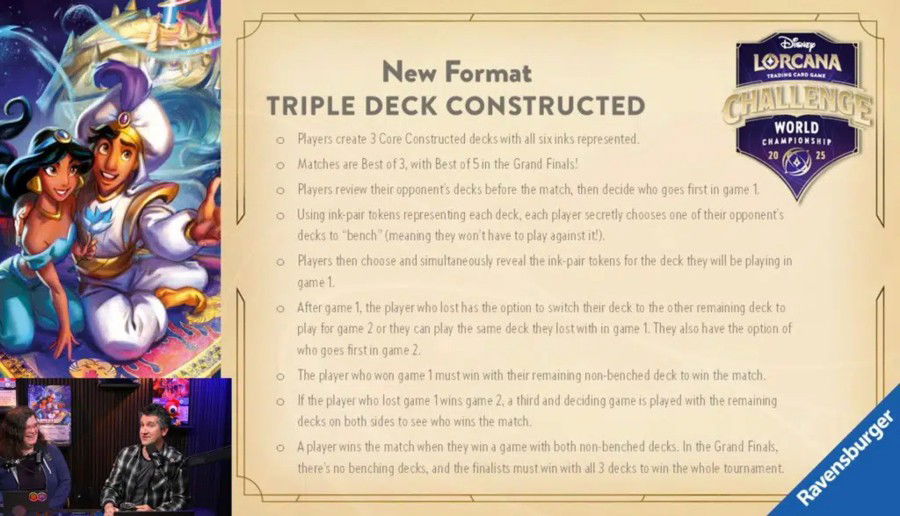
In the image above, brought by the official Disney Lorcana channel by Ravensburger, we see an explanation of the subtle differences between Triple Deck Constructed - the World Championship format - and Core Constructed - the format regularly used in events, including at local game stores.
Just like Super Sealed in Limited, the idea of Triple Deck Constructed is to evaluate how skilled a person is with different cards and strategies.
In Triple Deck Constructed, each participant in the World Championship must have three decks at their disposal, and the six ink colors in Lorcana must be represented between all three decks. In other words, each of them must be in a different ink pair, so it will not be possible to have the same ink in more than one deck.
Players will face each other in a Best of 3 match, so they must win two games to win the match. Before each match, the participants will see the opponent's 3 decks and choose one that will be benched. Thus, it is necessary to win a game with each of the two remaining decks to be the winner of the match.
The Grand Final of the World Championship will not have any decks benched, and will be a Best of 5. The first Lorcana World Champion, therefore, will be the one who demonstrates proficiency and skill with all ink colors in the game!
These changes greatly affect the entire process of creating and assembling decks, since the fact that the opponent will bench one of your decks requires careful consideration when choosing archetypes. We will talk more about this in the next section.
Deck Strategy - The Ruby Issue
The rules of Triple Deck Constructed mean that the entire deck selection process needs to be carefully thought out. The main issue is that, since players will have access to each others' lists, choosing the deck to be benched for each match requires special consideration in order to avoid having to face a really bad matchup.
Players that specialize in a specific deck or archetype will need to diversify their playstyle, since they will not be able to count on the inevitability of their preferred deck - even if the opponent doesn't choose that deck to bench, it will still be necessary to win with another deck in order to advance in the tournament.
The benching of an opponent's deck will also be a moment of great strategy. It is even possible to use it as your main strategy for your deck selection! For example, if a certain deck is extremely popular and widely used by many players, you can bring three decks that are good against that specific deck, proceed to never bench it, and thus guarantee three potential good matchups every round! Since your opponents will need to win with their available decks, they will have a hard time facing bad matchups.
Which brings us to a central point in choosing decks and dividing colors between them: Ruby. This ink is perhaps the most relevant one, since all the metagame data, archetypes, and winning decks, shows that Ruby basically has two relevant competitive combinations: Ruby-Sapphire and Ruby-Amethyst.
It's not that Ruby can't match with the other inks, but historically, the lowest winrates in the game tend to be concentrated in combinations that involve Ruby - except for the ones already mentioned, Ruby-Sapphire and Ruby-Amethyst.
It is precisely this polarization of the Ruby ink that makes it, in my opinion, the first and most important moment in preparing decks: will you combine it with Sapphire, and have more Control archetypes, or with Amethyst, and guide your decks more towards Aggro?
Let's analyze some potential combinations!
Deck Selection
The most successful decks in Lorcana events around the world will undoubtedly be part of the World Championship players' choices. The division of the six inks, therefore, leads to some archetype combinations that should appear frequently - after all, the focus of the participants is to become champions, so we should expect the most consistent lists that have already shown competitive success in tournaments.
We will not go into detail about each list, since all archetypes here have already appeared in previous articles, which can be reviewed at the previous link. I'll have, for each following archetype and decklist, the specific link of the article as well!
We will separate the subsections according to the selection of the three potential decks.
The Classics - Ruby-Sapphire, Amber-Steel, Emerald-Amethyst
This triad is likely to be the most popular among Worlds players, for a very simple reason: it encompasses three archetypes that have been very successful in tournaments around the world, and each ink pair has lots of options and tech choices.
This is the most prominent control list in the game, made famous by Dinh Khang Pham - champion of the Melbourne DLC, and thus one of the participants in the World Championship!
The song deck, with the Amber-Steel pair, is a fan favorite, and combines consistency, power, and one of Lorcana's core mechanics, which is using characters to sing classic Disney songs!
This is one of the newer archetypes, but has shown a lot of strength and consistency, and with some interesting updates from the recent set Reign of Jafar. It's a perfect fit for the last ink pair available.
The Aggro Selection - Ruby-Amethyst, Sapphire-Steel, Amber-Emerald
This triad should also appear in good numbers, and composes a strategy focused on benching key decks from the opponent's, probably those that have Ruby or Steel, to ensure that regardless of which of your decks is benched, you'll always have a quick and aggressive game plan available.
This ink pair won both recent Lorcana Championships, in Europe and in NA, and is without a doubt one of the strongest decks in the game - especially in the hands of players as skilled as those who will be at Worlds.
The deck that made Hiram and Fortisphere end up being banned, but nonetheless continues to put up good results even after losing those two important cards. It adapted well and remains strong in the metagame.
Another fan favorite - including yours truly! -, ChernaDogz is one of the fastest decks in Lorcana, capable of consistently ending games by turn 5 or 6.
Flexible Strategy - Ruby-Sapphire, Amber-Emerald, Amethyst-Steel
Here we have a trio that wants to make it difficult for the opponent to choose a deck to bench, precisely because it has an archetype of each type: a control, an aggro, and a midrange.
Ruby-Sapphire and Amber-Emerald have already been discussed in previous sections, namely as Items Control and ChernaDogz. So, let's review Amethyst-Steel:
Amethyst-Steel combines strong card draw with good board control, and the result is a very consistent and versatile midrange deck.
Surprise Combo - Ruby-Amethyst, Amber-Steel, Emerald-Sapphire
This trio is maybe a bit of a stretch, since personally I'd love to see some peculiar decks at Worlds, but it is quite possible that we could see two established archetypes - in the example here, Ruby-Amethyst and Amber-Steel - accompanied by a third off-meta deck, one that opponents would not Be Prepared - pun intended.
Ruby-Amethyst and Amber-Steel have already been mentioned, which leaves Emerald-Sapphire:
Combo decks are not usual in Lorcana, so it is somewhat surprising that a deck can reach 20 Lore in a single turn. With the possibility of benching an opponent's strong deck against this, it is quite possible for a Combo archetype to succeed!
Conclusion
And with that, we wrap up our World Championship pre-analysis!
We'll be watching all weekend and bring you the results and review of the event next week!
Let us know who you'll be cheering for and all the excitement for Disney Lorcana's first World Cup in the comments below!
Cheers, and see you next time!







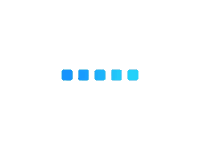
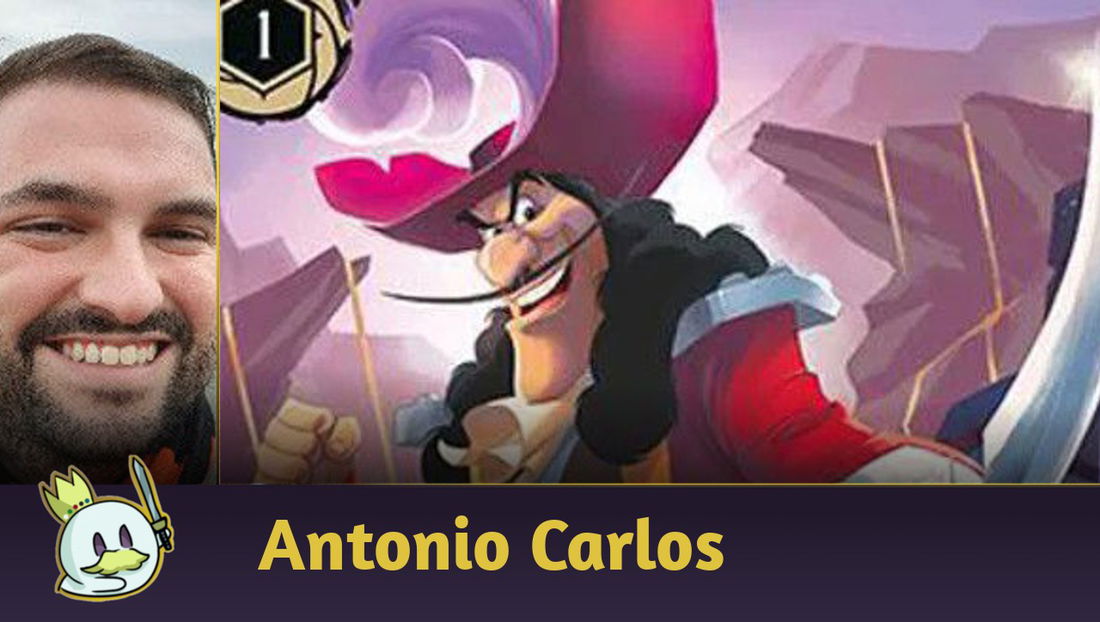
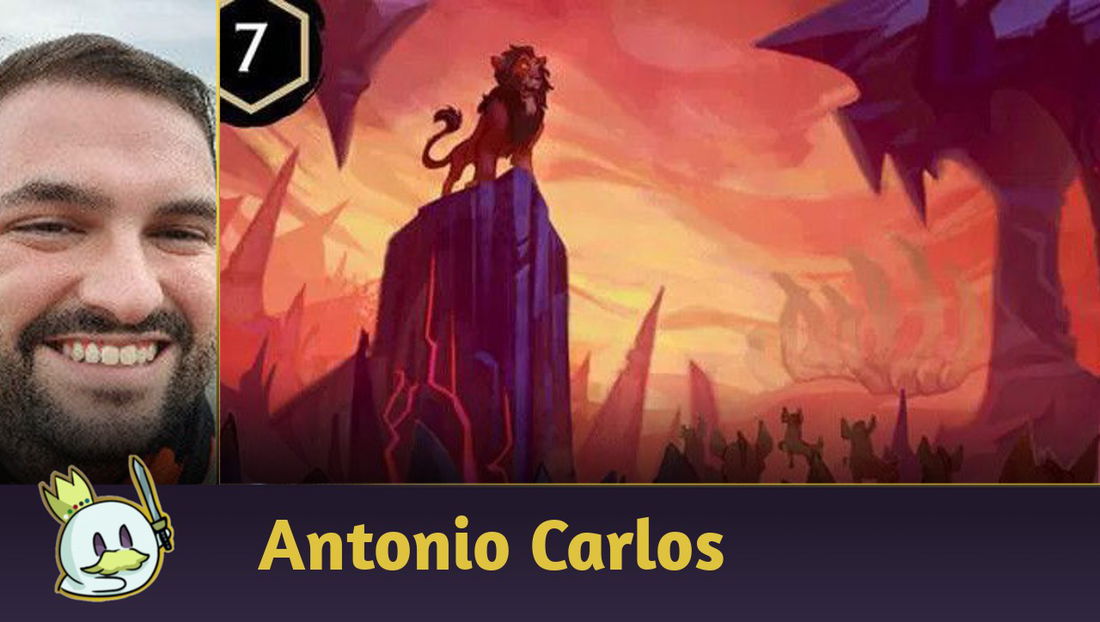
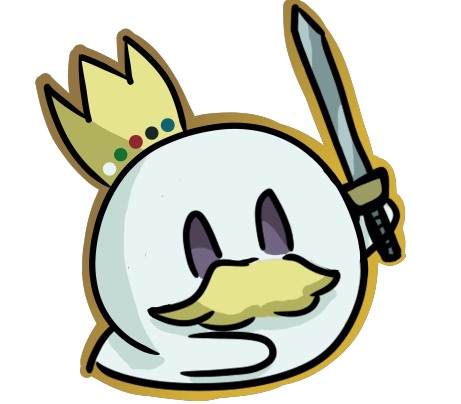


— Comments 0
, Reactions 1
Be the first to comment